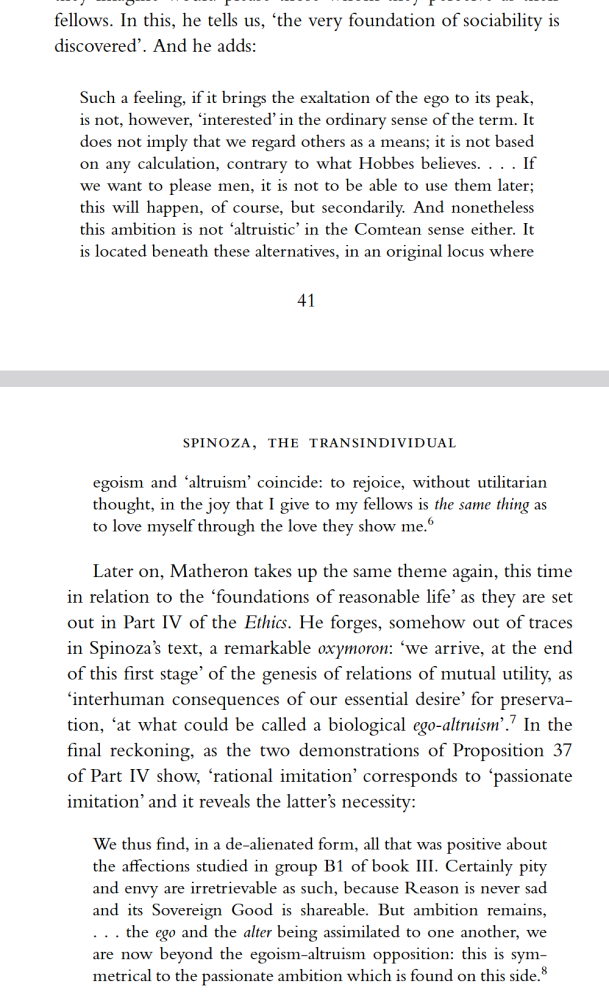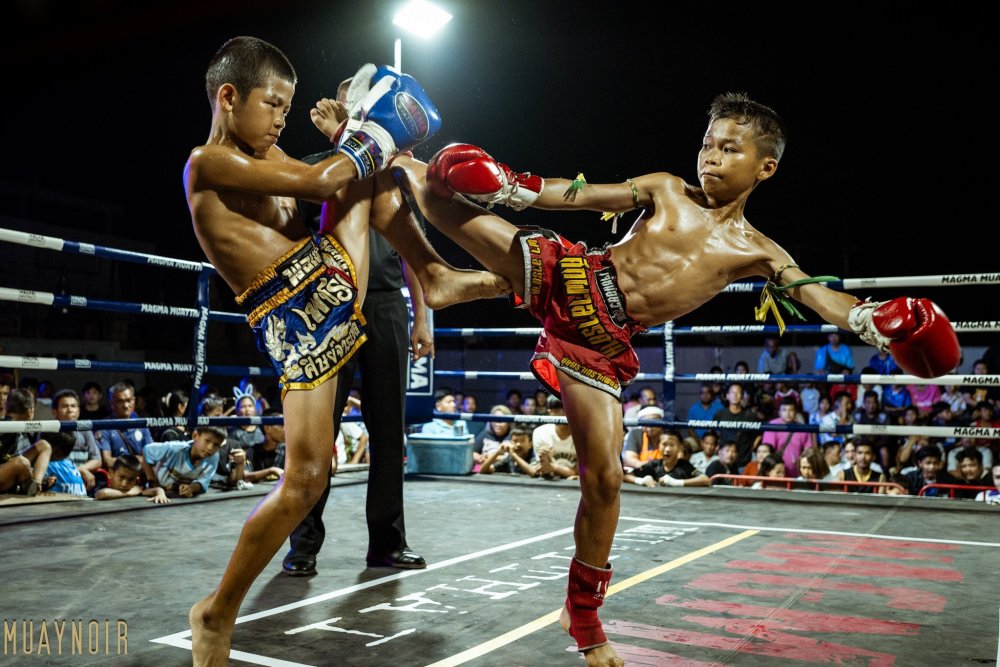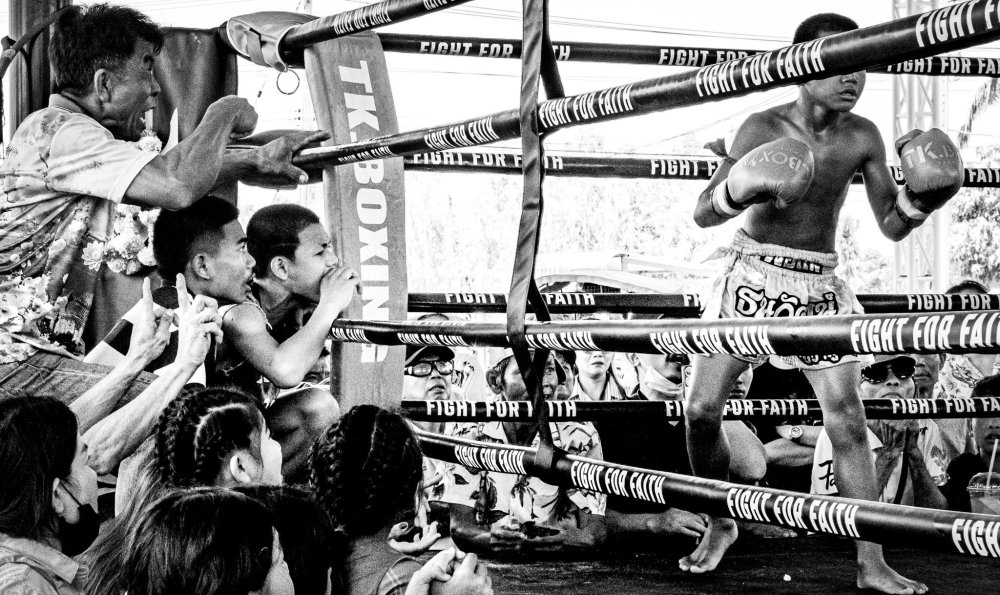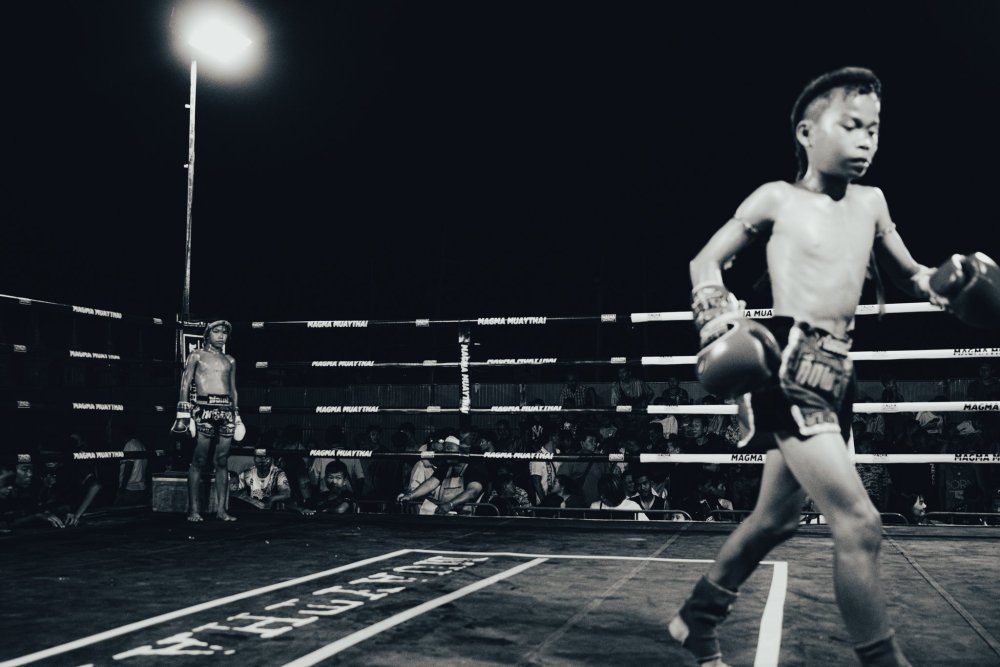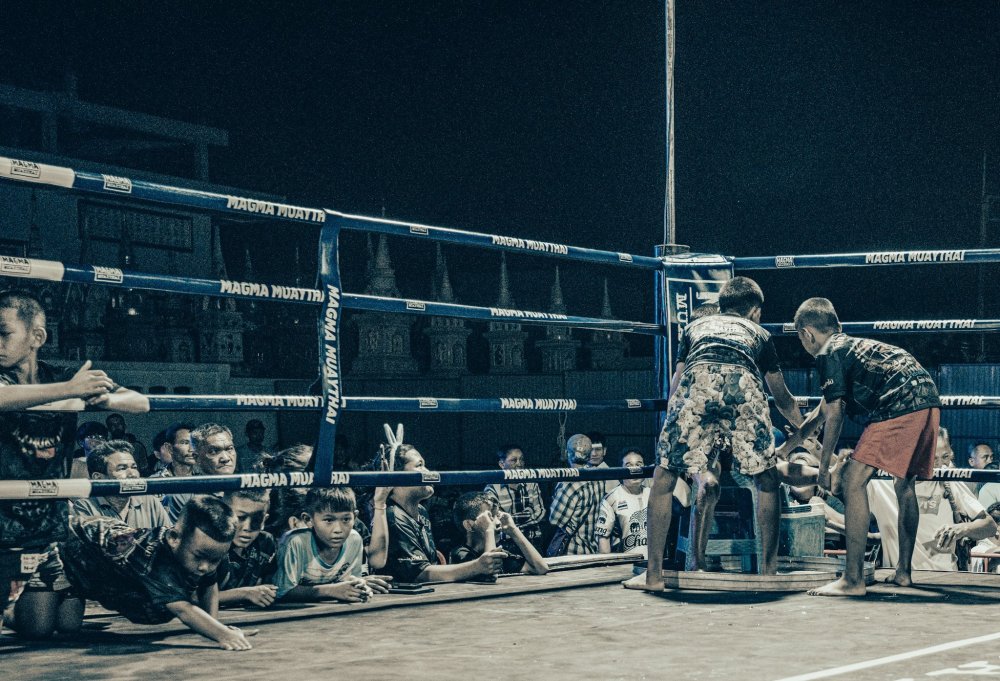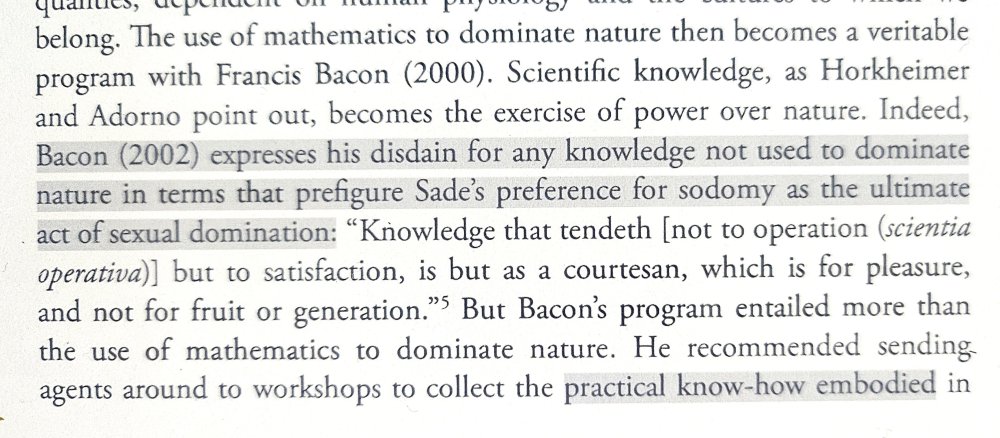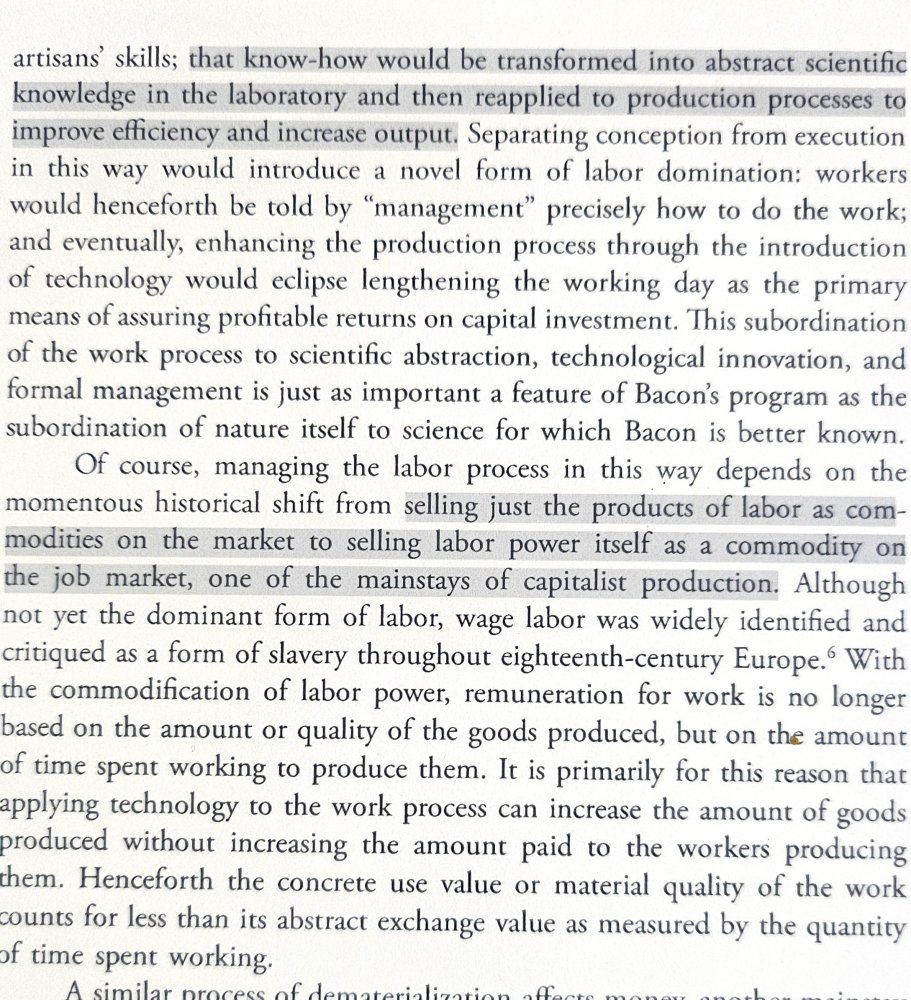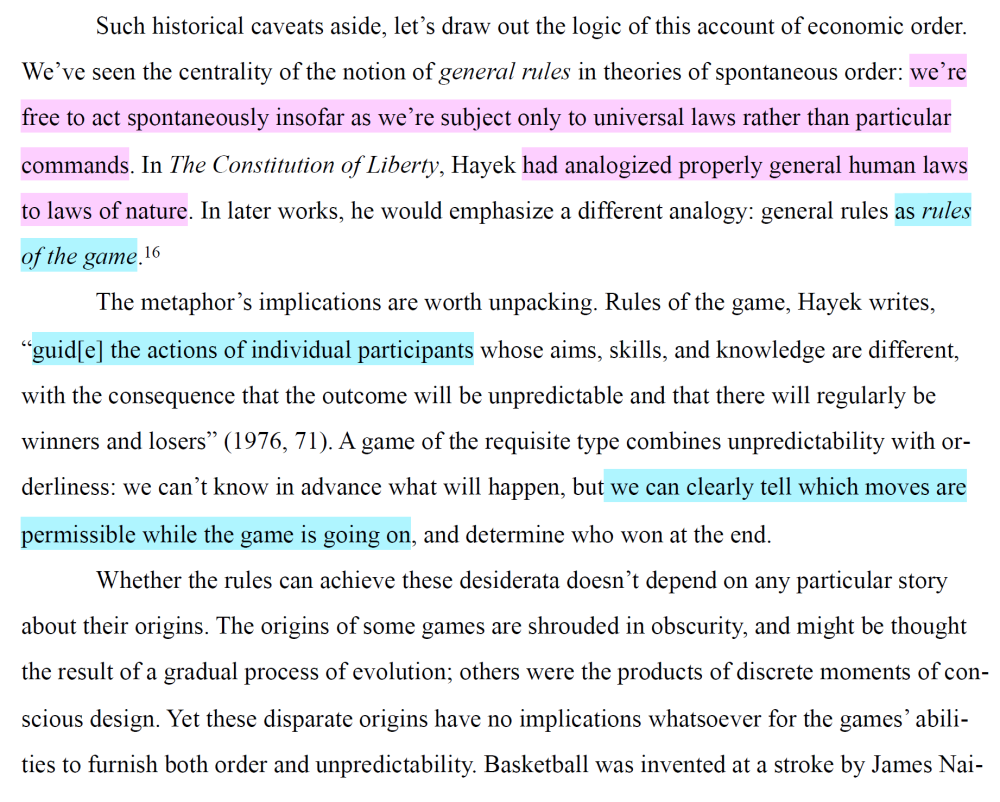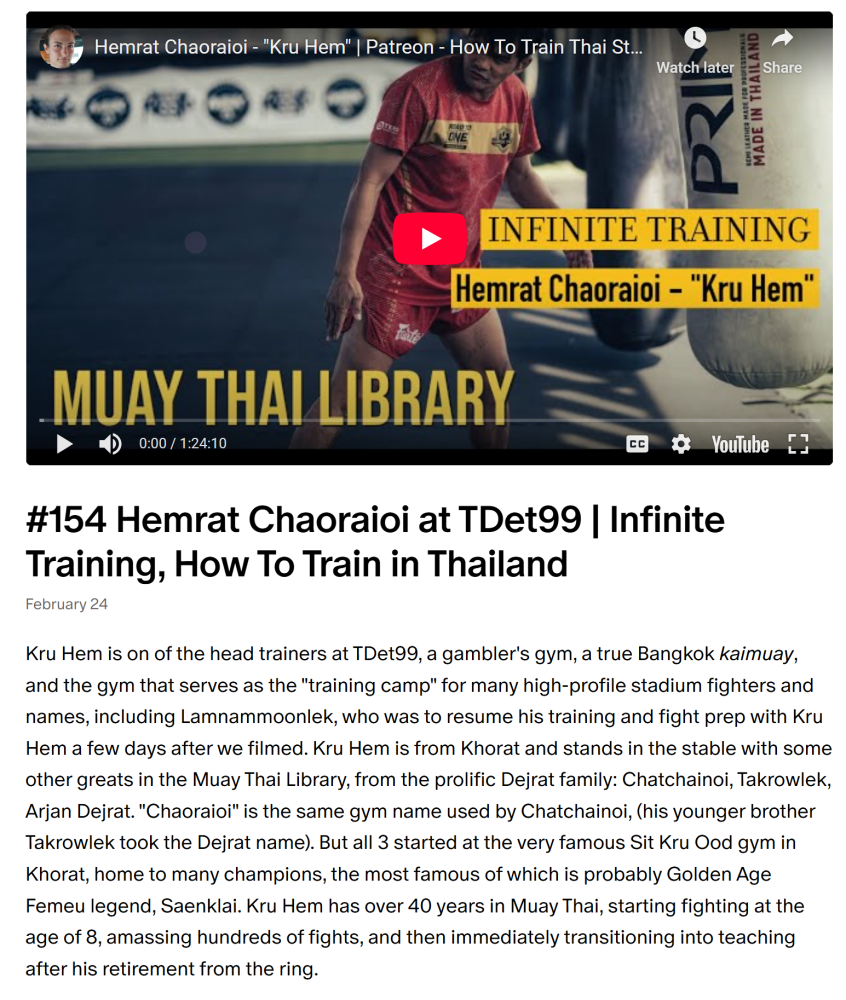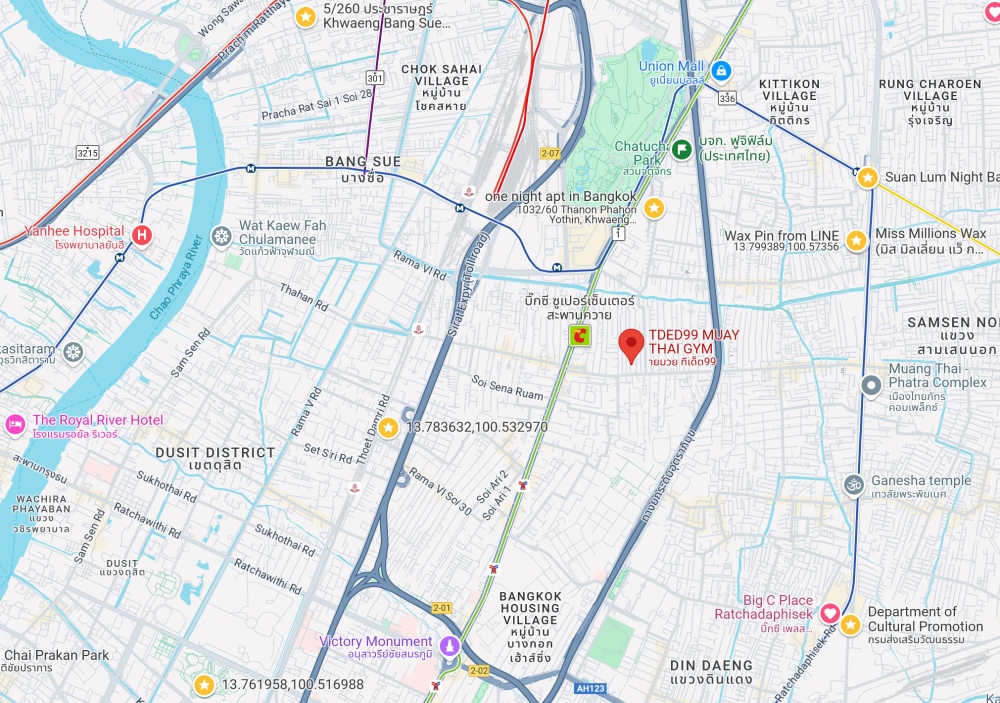All Activity
- Today
-
Here is some private discussion traditional Muay Thai description which helped develop this parable of the Guitar. The challenge, from a philosphical sense, but also from an ethnographic sense, is to explain the diversity and sophistication of technique and style that arises in the Thai kaimuay, without much Top Down instruction. Here appealing to Simondon's theory of Individuation. But...in the Muay Thai (traditional) example, you actually are learning through a communal resonance with your peers, everyone else in the camp. Through a group memesis. It's not a direct relationship to the "music" per se, between you as an individual and an "experience" It's horizontal... how the person next to you is experiencing/expressing the music and relating to the authority and the work. I've compared it to syncing metronomes. youtu.be/Aaxw4zbULMs?... the communal form of the kaimuay (camp) brings together a communication of aesthetic, technical excellence, in which there is very little or NO top down direct control or shaping. young fighters sync up with the communal form, which actually also involves an incredible amount of diversity. Everyone kicking on a bag in a traditional setting has a DIFFERENT kick, because they haven't been "corrected" from the top down... But all the kicks in the gym have a kind of sync'd up quality, something that goes beyond a biomechanical consistency. There is a tremendous Virtual / Actual individuation dynamic that I think you would vibe on. This is what gives trad Muay Thai so much of its diversity. So much of its expression. It's because of its horizontal, communal learning through mimesis and a kind of perspective-ism If you go into a Western Muay Thai gym all the kicks on the bag, from all the students/fighters will be the SAME kick. With some doing it better or worse, with more "error" or less than others. In a trad Thai gym all the kicks are different. ...but, its hard to describe...because they all express some "inner" thing that holds them together. Maybe the same thing can be seen in other sports, like inner city basketball or favela football/soccer, things that have a kind of "organic" lineage. They hold together because they are a cultural form that is developed in horizontal context and comparisons with peers (not Top Down), but everyone has their own "game". It is very diverse. When people try to "export" knowledge from these, let's call them "organic", contexts, processes, not only are things "abstracted" (often biomechanically, traced into fixed patterns), but they are also exported with Top Down authority which channels and exacts "faithfullness" to some isolate quality. I think this is Deleuze's main issue with Platonism. The idea that there is a "form" and then "copies" which are more or less faithful. This, I'd argue, is actually something that prevails in "export" (outside of a developmental milieu), under conditions of abstraction (and perhaps exploitation). This is the "cut". 6:29 PM Here is a video where we slow motion filmed the kick of Karuhat, one of the greatest kickers in Thai history. We not only filmed him, but also Sylvie trying to learn through imitation. He is the only person who has this kick, in all its individuation. You cannot get this kick by just imitating it...(in person, Sylvie) or as a user practicing it from the video. It was developed in a virtuality of the kaimuay, by him. But, in documenting it...some (SOME!) aspects of it are transmitted forward. ...its a kick that is very different than many Western versions of the "Thai Kick" The keys to it are about a feeling, an affect array perhaps, and its uniqueness came out of the shared "metronome" of the traditional gym, the horizontal community of training, which also produced other kicks of the same "family of resemblance" (as Wittgenstein would say) Ultimately, its preservation is about returning to the instruction of a "feeling"...but also highlighting that the kick itself came out of a mutuality of feeling, and not a Top Down instruction. It's much closer to something like all the diversity of qualities of different pro surfers, who learned to surf not only one-to-one on individual waves, but in communities of surfers who would all go to one spot, and kind of cross-pollinate, compete in a mutuality (non-formally), steal and borrow from each other, a milieu. Not because there was some kind of Top Down authority of "how to surf" or "what exact techniques to use", or because there was an ideal "form" and a lot of error'd versions of it copying it. Almost everything that Sylvie produces is Sylvie learning through imitation and FAILING before the living example, because what we are actually documenting is not the Ideal vs the bad copy...but rather the actual, embodied, lived relationship that integrates oneself with another, converging in communication. She is "copying", but that's not really it. It's about syncing up, and the material/psychological relationship between two people, which smooths over the biomechanical "copy", and fills in some of the affects. But...this mutuality is really also artificial, because its one-to-one, and this isn't how Muay Thai technique is transmitted. It's developed in community. One-to-many. Many-to-one.
-
Balibar on Matheron, on Spinoza and Ego-altruism: Re-reading this essay, as well as many subsequent conversations involving Simondon's Pre-Individual Field (PI Field) theory of individuation, spurred me to write this Guitar parable explaining some of the developmental dynamics of the Muay Thai kaimuay today:
-
Kevin von Duuglas-Ittu started following A Guitar Parable of Muay Thai
-
Imagine there is a guitar school, where boys come to live at a pre-teen age, that has something of a feel of a family. None of them know how to play a guitar. They are given guitars and given very basic drills to practice each day. They may be taught how to basically hold the guitar, or hold strings, but there isn't much technical instruction. They can see from older boys who have been at the school how it is done, and there is a lot of imitation. The drilling is fatiguing. Everyone drills together, playing scales or basic chord series over and over, and everyone is doing it together. They can see each other, and even the most experienced players in the school are sitting with the most inexperienced. Some may struggle, they push through. There is a strong sense of obligation, and the dynamics of the group hold everything together. Sometimes this drilling is grueling. Experienced student players are so adept at the drills they can do them in a very lazy fashion, or they can do them with flair and personal small variation. Sometimes they can find themselves "competing" with others in the group, just in a sort of expressiveness, because the drills are so boring. The fatigue units everyone. Younger boys watch the older boys add small qualities to their drills. Aside from drilling like this, there battling. This is almost always quite playful...though there is always a dimension of dominance, of agonism. In pairs students "battle each other" in back and forth exchanges of aspects of music, much of it drawn from the skills in the drills, but the battles are musical, and expressive. Communally there develops an aesthetic where one knows if they are losing a battle at any point, mostly from watching the playful battles of older guitar students. The younger students battle in a rather simplistic way. There is a kind of metronome of music as everyone is battling at the same time. There is almost no "instruction" given in these battles, no correction. In the drills there may be some correction, but the correction is toward the intensity and focus given. Most of the correction comes organically from the group, and the lead examples of developed players. Because fatigue is involved in these sessions, playful guitar battles, which last in rounds everyone follows, may by quite lowkey. Students that know each other well may just used them to rest, in only a gentle back and forth, together "mock" battling. And then other playful battles may really escalate, because social hierarchy in the school, where everyone lives together, is always contested. Winning at any one time feels substantive. So, in these sessions of fatiguing drilling together (drills which develop personally expressiveness, and extraordinary endurance) and playful battles (which vary in intensity from sleepwalking imitative back and forth, to outright contests of superiority, and sometimes passing between the two intensities in alternation), make up the conditions for skill development, not only at the technical level, but also the level of styles. At a fairly young age the students of the school also participate in public guitar battles versus other guitar students of their own approximate skill...as do the more experienced students. Everyone attends these, and guitarists in these battles win money, some of it for themselves, some for the families they don't live with, some for the school. Gambling abounds in these public battles, so guitarists on stage can always tell if the battle is close, who is winning, from audience bets and their shouts and energies. The battles have a strong aesthetic shape, composed of 5 rounds. In the aesthetics of music, as the battle builds the most intense back and forths occur in rounds 3 and 4, when the music is really building. Wins and losses in these public battles raise or lower the social standing of the students when they go back to the home school. And the display of creative skills in play is fed back into their play battles and drilling back in school. Sometimes they are corrected, often they are urged to be more of a certain way, a way they would have won, but there is a cycling dynamic between the public battles, and the playful battles back in the school. Everyone in the school is watching everyone. Student learn from imitating the better, older, more developed students, but also from others that are their own peers. Because everyone of a certain age and experience is sharing the fatigue, and the struggle, how others your age are doing things affects and inspires you. The environment is incredibly mimetic. Identities and skills are developed in the context of others. The host of schools in a region, and their 100s of local public battles, collectively create the styles of the music of that region. Certain techniques or tempos fall out of favor, others rise, according to the gambling values. Much of this is shaped by the underlying culture, and the cumulative history of the music, generations of public battles, and even famous musicians that grew out of these battles. It is an agonistic aesthetics of music, full of styles and localized techniques that have developed in diversity, but it holds together as a single "music". If you hear this music being played, you recognize it right away.
- Yesterday
-
Robbert Wilson joined the community
- Last week
-
KaylaWells changed their profile photo
-
KaylaWells joined the community
-
It's interesting, I think (and to keep it short) the recent surge in MMA/Muay Thai fans has both got the sport thriving but also at the same time dare I say ruined the magic Muay Thai had. It's come leaps and bounds from the poor mans sport it was known as to the rare few outside thailand who knew about the sport.
-
Nokyai joined the community
-
Arihant C Mart joined the community
-
Buck joined the community
-
sumiyasa joined the community
-
mockerstest joined the community
-
selfstudyseo joined the community
- Earlier
-
4. Some kid who they didn't even have a proper photo for. He knew he was fighting on the day and he just pulls up as a big betting underdog who no one knows and won easily. His name is Petchyindee Sor. Roongaroon. His dad fought under Sia Nao's show, now his kid's under Sia Boat's show, that's why hid name is Petchyindee
-
A lot of these thoughts of several years came together for me in side conversation with Arm of Muay Thai Testament Instagram who is looking to perhaps put together a project around Muay Dek fighters of today. I asked him if he could link some present Muay Dek fighters on the rise. This is what he wrote, posted with permission, posted in a series of replies: Strong Muay Dek Fighters Today 1. I was rewatching one kid this morning, as I do with all the kid fights that gets good reception, and this kid from some gym I've never heard of is so good femue. I think the gym is a new addition to Petchyindee's roster now. His name is Kaona Jor. Nopparat The part about Femue being easier to execute at lower weight is so true. Regarding the examples, I only really know the Petchyindee ones but here goes. In no particular order: 1. I was rewatching one kid this morning, as I do with all the kid fights that gets good reception, and this kid from some gym I've never heard of is so good femue. I think the gym is a new addition to Petchyindee's roster now. His name is Kaona Jor. Nopparat
-
GwenSkinner joined the community
-
above, festival fight in Pattaya Just some thoughts and observations on the overall state of Thailand's Muay Thai. Not an expert opinion, just an informed perspective. The title of this piece may sound absurd, or maybe for some just an exaggeration, but there is among some long time fans who have watched a lot of Muay Thai in Thailand the sense that the only Muay Thai worth watching in Thailand now, in terms of actual skill, is Muay Dek, the Muay Thai of Thai youth. This piece about why that may be so. There is a sense that Muay Thai has been stretched now in two directions. You have Bangkok stadia, gambling driven traditional Muay Thai, supposedly the acme of the country's traditional talent, and you have Entertainment Muay Thai (with various versions of itself), a Muay Thai that is bent towards - and in many cases just FOR - the foreigner. If I was to really generalize between the two, one line of Muay Thai heads toward more "technical" point fighting and fight management (trad stadium Muay Thai), fights where fighters and corners are always responding to shifting gambling odds, and on the other hand a Muay Thai (in the extreme case of ONE) which is all about combos, aggression and offensive risk taking, emphasizing trades in the pocket and knockouts. The problem is, neither trajectory is very skilled (at least in the historical sense of Thailand's greatly skilled fighters). Muay Thai has become increasingly deskilled, along these two trending branches. And, if you mostly watch one of the two, you might not have noticed the deskilled aspects, because this is just the "new normal", and competition always produces winners who seem in comparison to others, quite skilled. It's only when you take the wider view, not only of the history and greatness of the sport, but also of the present state of Muay Thai itself, importantly including Muay Dek, do you see the drop in skill in adult fighting...as each promotional style squeezes out certain qualities from their fighters, cutting off their full, expressive development. Even with big sidebets on fights (gambling), and seemingly lots of pressure, Muay Dek fighters fight with great freedom. Some of this is a mystery why this is lost, but what follows is a sketch of how Muay Dek fighters change and become limited once they reach a certain age. Why Are the Muay Dek Fighters the Best Muay Thai Fighters in Thailand? If you just watch a few fights, and you have an eye for it, you'll see it. In a word, freedom. In another word, expressiveness. And still an third, sanae (charm, charisma, a key component in Thai traditional scoring). The Muay Thai of the Golden Age (1980s-1997) was filled with highly skilled, very well-rounded, but importantly very expressive fighters, fighters who fought with experimentation who were constantly adjusting to their opponent, drawing on styles and tactics that could in shifts change the outcomes of fights. And in fighting in that way that exuded personality, uniqueness and charm...aura. Much of this quality, and flexibility is gone from Thailand's Muay Thai, but in today's Muay Dek some of it is really still there. Its only when these fighters get to a certain age...maybe 15-16, that it starts to become squeezed out. In the Muay Dek even of today you get fighters who are regulating their energies with great subtitle, not swinging between overt passivity or over-aggression, fighters engage more continuously in the classic style, with fewer ref breaks, less stalling, fighters drawing out extended phrasing and highly technical defensive stretches that endure. A greater variety of weapons, and even transitions between fighting styles or a shifting of tactics, to solve what is happening in the fight, a kind of cerebral aesthetic that older fighters seem to have lost the capacity for. At the highest levels of Muay Dek youth fighting you see dimensionality...and personality. There is much less nibbling at leads. Instead one sees that leads are vied for more or less continually, and expanded when achieved, without devolving into hyper-aggressive mashing. I'm going to leave Entertainment Muay Thai to the side for now, especially ONE which is its own particular excessive exaggeration, mostly because its kind of obvious how promotional hype, booking dynamics, rule-sets and bonuses shape fighters to fight in a certain more limited way. What many may not realize is that trad Muay Thai in the stadia also forces fighters to fight in a certain way, in many cases simplifying or pairing down what they had been capable of when developing as youths. I'm going to say "gambling" here, but gambling is not the boogieman monster that a lot of online commentary makes it out to be. Gambling in Muay Thai is essential to its form, in fact I don't think Thailand's Muay Thai would have reached the complexity of its art without ubiquitous gambling, all the way down to the 1,000s and 1,000s of villages and provincial fight cards, its ecosystem of fighting, which have gone on for maybe centuries. Some of the discussion of the importance of gambling I discuss speculatively here: above, festival fight in Buriram The problem isn't "gambling" per se, but rather that in the larger venues in Bangkok because of the changing (eroding) demographics of Muay Thai the shift of economic power to big gyms, and the dwindling talent pool, the powerful forces of gambling interests have lost proportion, and now have outsized impact. There are not enough counter-balancing forces to keep gambling's historically important role in Muay Thai's creativity, in check. These have worn away, leaving gambling as too prominent. But, I'm not talking about corruption here (which everyone loves to turn to with an infinite finger of blame). I'm actually talking about the way in which Muay Thai is traditionally fought with fighters responding in a live sense to the shifting odds of the audience. Online gambling has complicated this more human, social dimension of the sport, abstracting it to 1,000s or 10,000s of people of varying interests and even knowledge, on their mobile phones. The demographic of "who" gambles has changed, and increasingly people are gambling who have less knowledge about the sport. They'll place a bet on Muay Thai just as they'll place a bet on a football game. Again, let's bracket, let's put the online nature of gambling to the side, and just talk about the traditional relationship between live fighting and live in-person gambling in the stadia. The fighters are fighting TO the odds. The odds are the "score" of the fight, just like in basketball you could look up to a scoreboard and see the score of the game, in Muay Thai you can look to the odds and (roughly!) know the score of the fight. There may be distortion in the odds, whales and their factions of one sort of another may be putting their thumb on the scale, but there is a symbiotic discourse happening between live gambling and the fighters (and their corners). Some of this traditionally has produced great complexity of skills, the ability of fighters to not just "win" the fight in terms of points, but also manage the fight, in stretches, shaping narratives. But today, the exact opposite is happening. Gambling is deskilling traditional Muay Thai, in large part because the small gyms of Thailand - the gyms that actually grow all the fighters, feeding the talent of Bangkok - have been eroding. Not only have they been disappearing (there are far, far fewer of them), those that exist still have no political power in the socio-economics of the sport. When fighters of small gyms enter the gambling rings of Bangkok, not only are they doing so on a very fragile line of income, often losing money to even bring their fighters down, they can no longer bet big on their fighters to supplement fight pay. Betting on your own fighter was once an entire secondary economy which grew small gyms and encouraged them to create superior talents. If you had a top fighter he could be a big earner not only for the gym, but also all the padmen krus in it, aside from fight pay. Because small gyms have lost power overall, political power, they have to live at the margins, which means their fighters have to fight extremely conservatively so as to not be blamed if their fighter loses. They need the backing of the social circles of gamblers. If you lost, it can't be because you took a risk. And because big gyms are going to win (force through political weight) close fights, small gyms have to practically walk on egg-shells in the way that their fighters fight. Generally: get a small lead...and once you have that lead protect it at all costs. Don't do anything risky to expand the lead. And, because small leads are easily lost, fights often turn into a series of nibblings, with both fighters protecting their tiny leads, back and forth. They aren't trying to win, they are trying not to lose. This form of fighting has transmitted itself to big gyms, is the new traditional form of fighting. Don't risk blame. This aspect of "not my fault", "defend a small lead, take it to the end of the fight if you can (5th round), make it close enough and then blame politics or corruption if you lose" has become a normalized style of traditional fighting, across venues among adults. Some of this is because the current state is an out of proportion exaggeration of the truth that traditional Muay Thai fighting always has been expressive of political powers and social capital struggle in hierarchies outside of the ring. Fighters ARE part of and in the ring express social networks. This is part of Muay Thai's social dimension and cultural anchoring. It's just that with the erosion of the powers of small gyms, the dilution of the talent pool, the hoarding of limited talent, has pushed this aspect too hard, and distorted the sport, draining it of skills and its renown complexity. To give a small anecdotal example of how this deskilling works, I remember when a smallish gym was training a fighter, and in padwork the fighter switched to southpaw, just experimentally. No! The answer came back from the kru, and they related a story from the past when one of the gym's fighters had switched to southpaw in a fight and lost. The gamblers who bet on him were furious. He had "blown" the fight. The gym had lost face. From this single event, probably a fight not of much consequence, the gym now forbade switching. It could cost you a fight. An entire branch of Muay Thai (that of switching) was cut off from that gym's fighters...forever. Not only in terms of that technical branch of development, the whole spirit of experimentation and creativity was closed off. The goal was: get a lead...keep it. Don't develop a style that is complex, or varied. Don't do anything in a fight that IF you lose, the gamblers who backed you will blame you and the gym for. This is deskilling. one reason why Thai fighters have been the best in the world isn't just that they have trained and fought young. It's also that they have been at the apron of fights, watched the shape of the traditional aesthetic, socially absorbing a great deal of fight knowledge. At the rope, even as cornermen or impromtu coaches. Its not just the doing, its the participation in the Form of Life that is traditional Muay Thai, bringing a depth of IQ. As small gyms and kaimuay across the country lose power in Bangkok, social power, they have to exist in very narrow economic margins, which means that technique wise their fighters have to fight in very narrow lanes. The spontaneous and the creative is too risky, because gyms don't want to be blamed. Fighters cannot explore or develop new ways of winning fights. There is a secondary dimension in this, as the downfall of the Thai kaimuay is told, which is IF a small gym does produce a particularly strong talent, this talent will not become a resource for the gym, adding honors to the gym (championship belts, etc), growing the gym through his presence. Instead, if you produce a talent this talent will be ostensibly stolen from you. Not outright stolen, but you will be pressured to "sell" their contract to a big Bangkok gym. This pressure will usually come from the fighter's parents, who want success and fame for their son, and the esteem of a bigger name, and it will come from within the hierarchies of the sport. The sale will happen. Instead of a developed talent adding to the richness of a gym's culture and growing their talent own pool of younger fighters who want to share in the glow of gym success, instead you'll be financially compensated with a contract sale. Some money in the pocket, to the gym owner, but not the kind of verdant growth a talent would have brought in the past, something that would shine across all the krus and padmen, and younger fighters in the kaimuay. And, fighters now are being extracted from small gyms younger and younger. The comparison is fruit being picked from trees more and more less ripe. Not only are fighters in general entering the Bangkok stadia with far less experience and development in the past, fighters are also being swept up by big gyms at a much higher rate, at an earlier state of their development. The ecosystem of the small gym, 100,000s of them, is being starved out. And its that ecosystem that historically had produced so much of the foundational complexity that gave Bangkok fighting so much of its renown diversity. Fighters that entered Bangkok stadia used to be much more complex and experienced, and then once they got there the complexity and experience of that scene increased and amplified them, spurred them to greater growth. Now, its the opposite. Arriving in a Bangkok stable may very well nullify your potential. We might add to this that the large big name gym stables of Bangkok today, that have swept up much of Thailand's diminishing promising talent, concentrating it, have become more like holding houses of that talent, and fighter factories for promotions, and less like developmental houses as old Bangkok gyms like Muangsurin, Thanikul, Pinsinchai, Dejrat, Sor Ploenjit had been, promotion favorites which maintained not only a kaimuay developmental creativity, but also more lasting connection with provincial sources. Muay Dek and Facing Power So, the good news is, despite all these forces against creativity, against small gym development, Thailand is still producing very high level Thai fighters from youth. These fighters fight with complexity and freedom, full of sanae, technical excellence, narrative control, quite different than their older counterparts who have learned to strip away their individuality attempting to preserve leads in gambling's stadium Muay Thai. I'm not sure what to account for this other than to believe that Thailand in its heart still maintains the aesthetics and richness that created the acme of the sport in the Golden Age, these qualities haven't been stamped out yet...it is only when fighters get to a certain maturity, when they are fighting for gamblers without a lot of social power themselves, protecting tiny leads, that they lose these qualities. They become deskilled. There is another element to the mystery of why these Muay Dek fighters lose their skills when they age. Kru Gai at Silk tells Sylvie: It's easier to be femeu when everyone is low weight, and nobody has power. Muay Dek fighters develop all this complexity because there is no "power" consequence for their experimentation at low weights. And one can see how this makes a serious amount of intuitional sense. Gamblers today favor more "power" in Muay Thai, so femeu fighters enter contexts where suddenly there are consequences that limit what you can do. But, if you take a moment to think about it, femeu fighting youth of the Golden Age also once they hit a certain age encountered "power" in opponents. But, instead of losing their skill sets at maturity, they actually grew as fighters, became more complex, more creative, more effective...against power. Someone like Karuhat was fighting up two weight classes in the 1990s, a very femeu fighter, against very powerful opponents. It's can't be that encountering the maturation of "power" is the thing that is shutting down the development of the youth, who have already developed so much prior. In fact, there seems a rough parallel between artful youth fighters of the Golden Age and now. Both of them hit this "wall" at a certain age. But in the Golden Age this accelerated their growth, today it stunts it, and even regresses it. I suspect it has to do with the overall conservative form of stadium gambling Muay Thai, the entire incentive and punishment system that produces a lot of tiny-lead chasing...and this goes back to the dis-empowerment and erosion of the small gyms that feed the sport, developing the fighters. The best fighters in all of Thailand are the Muay Dek fighters. It is the closest thing to a natural lineage with the greatness of the past. But right now...there is no way forward for them. No way for them to allow their expressiveness of character and technique to expand and not be disciplined into submission, dulled. They have to face the trad conservative ecosystem, or have to turn to the hyper-aggression of entertainment promotions, each of which robs them of a vocabulary of control and expression.
-
Here from Eugene Holland's new book, on Markets and Capitalism, talking about the capture and abstraction from artisanship. The "efficiency and increased output" of Bacon's concerns in a Muay Thai context is the efficiency and output of the generation of students/clients (consumers, customers) and of labor for Muay Thai promotions. It's about making the commodity cheaper and faster (deskilling), so that parts and inflection points in the process become replaceable - and therefore less expensive. This is how Thailand's Muay Thai is being harvested by technique, pushed into global, deskilled commercial production.
-
Finding a Bangkok Gym After 1-year hiatus
AandAinThailand replied to An-Idea65's topic in Gym Advice and Experiences
I'm not sure where Fani Peloumpi trains nowadays - might be that she still gives privates at MTA academy which is quite central. I would contact her on facebook, as we did. We enjoyed our privates with her. Luckily, in my experience in Thailand, the pads are held by Thai trainers who have control and no need to use strength to show off, so my main worry would be rather to avoid touristy gyms near where half the people training there are mainly concerned with getting the right shots for their social media. If you stay for one month, i would try out different gyms and see which fits best. Getting different experiences and approaches would be a plus, in my opinion, and Bangkok is like a candy store in that regard. Add to that a few privates e.g. with Namsaknoi, or any trainers at established gyms such as Sasiprapa, Petchyindee, Kaewsamrit, Eminent Air, Luktupfah.- 1 reply
-
- 1
-

-
An-Idea65 started following Finding a Bangkok Gym After 1-year hiatus
-
I am going to Bangkok in a few weeks and plan to stay there for one month, working remotely. I'm coming off a 1-year hiatus and will need to slowly ramp up my training again, so looking for a place that I can pop into 2-3x per week to start, and then slowly progress. I am a casual student so don't think training camps are for me right now. I also want something in between traditional and Westernized - just a gym culture that is welcoming to intermediate women, and makes sure that egos are checked at the door (I've been to way too many gyms holding pads for large, powerful dudes with egos that went unchecked, which led to a lot of unnecessary injuries for me - part of why I took a hiatus). Given this, I wonder if taking just private classes is better, until I "sniff out" the vibes of the other students, before holding pads with them.. I've been looking through lists on here and quite frankly, overwhelmed by the choice. Budget-wise, id like to keep the privates down to less than 40/hr Anyone have recommendations?
- 1 reply
-
- 1
-

Footer title
This content can be configured within your theme settings in your ACP. You can add any HTML including images, paragraphs and lists.
Footer title
This content can be configured within your theme settings in your ACP. You can add any HTML including images, paragraphs and lists.
Footer title
This content can be configured within your theme settings in your ACP. You can add any HTML including images, paragraphs and lists.
